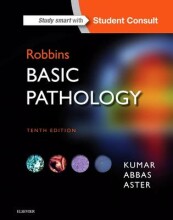Heart - Cardiomyopathies and myocarditis
11 important questions on Heart - Cardiomyopathies and myocarditis
What is Dilated cardiomyopathy (DCM)
characteristic: dilation of the ventricles
What is the fundamental defect in DCM?
What is Arrhythmogenic right ventricular cardiomyopathy
- Higher grades + faster learning
- Never study anything twice
- 100% sure, 100% understanding
What is Hypertrophic cardiomyopathy (HCM)
Name a characteristic of HCM
Amyloidosis is a form of Restrictive cardiomyopathy. How is it caused?
What are the consequenses of Amyloidosis
- Amyloid within and/or in between cardiomyocytes: inhibition of heart function
- Amyloid in blood vessels: can cause myocardial infarction
Endomyocardial fibrosis is a form of Restrictive cardiomyopathy. How is it caused?
Besides amyloid deposition in Restrictive cardiomyopathy, there are also other molecules that can be stored in the heart that are pathogenic. Name these molecules and their consequence
Lymphocytic myocarditis is caused by a viral infection. What are possible consequences of lymphocytic myocarditis?
- arrhythmia
- vasospasm (=contraction of blood vessels): this can cause myocardial infarction
- heart failure: probably related interleukins that have a negative effect on contractility
- *NOTABLY: in LM is cell death of cardiomyocytes limited unless a patient has a fulminant myocarditis: then there is extensive cell death of cardiomyocytes
In infectious myocarditis the predominant inflammatory cell points to the cause. Name the different cell types with their causative infection agent
neutrophilic granulocytes: fungi or bacteria
eosinophilic granulocytes: parasites
aggregates of macrophages (and/or Giant cells): tuberculosis
The question on the page originate from the summary of the following study material:
- A unique study and practice tool
- Never study anything twice again
- Get the grades you hope for
- 100% sure, 100% understanding
































